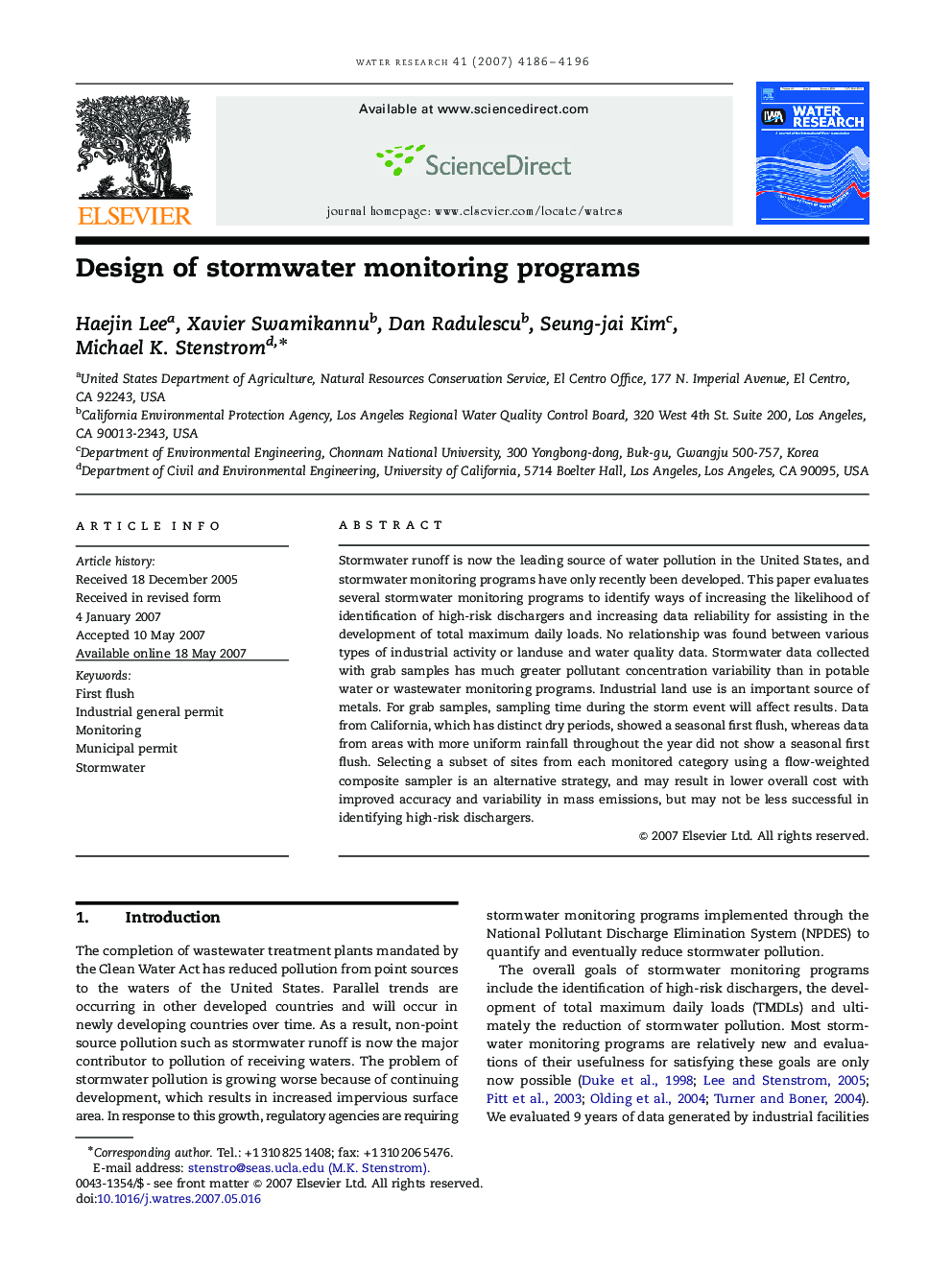| Article ID | Journal | Published Year | Pages | File Type |
|---|---|---|---|---|
| 4485910 | Water Research | 2007 | 11 Pages |
Stormwater runoff is now the leading source of water pollution in the United States, and stormwater monitoring programs have only recently been developed. This paper evaluates several stormwater monitoring programs to identify ways of increasing the likelihood of identification of high-risk dischargers and increasing data reliability for assisting in the development of total maximum daily loads. No relationship was found between various types of industrial activity or landuse and water quality data. Stormwater data collected with grab samples has much greater pollutant concentration variability than in potable water or wastewater monitoring programs. Industrial land use is an important source of metals. For grab samples, sampling time during the storm event will affect results. Data from California, which has distinct dry periods, showed a seasonal first flush, whereas data from areas with more uniform rainfall throughout the year did not show a seasonal first flush. Selecting a subset of sites from each monitored category using a flow-weighted composite sampler is an alternative strategy, and may result in lower overall cost with improved accuracy and variability in mass emissions, but may not be less successful in identifying high-risk dischargers.
